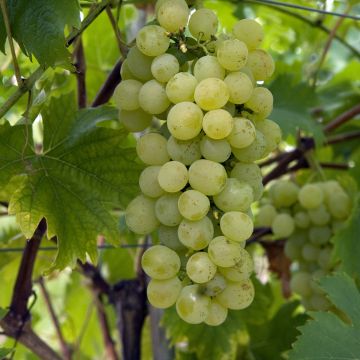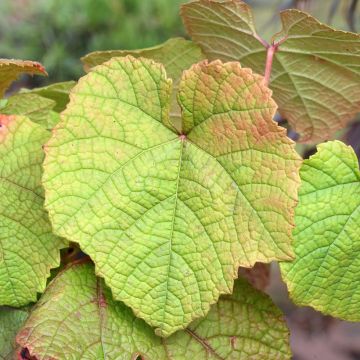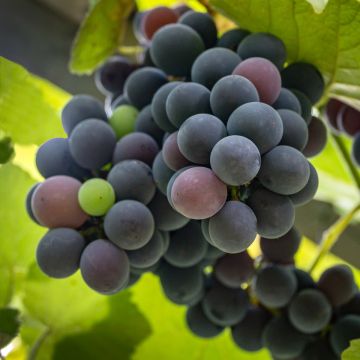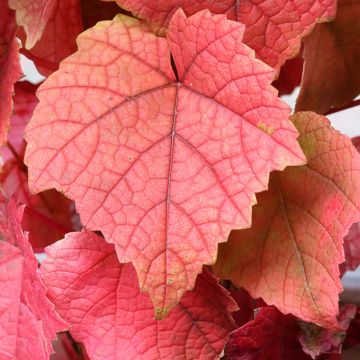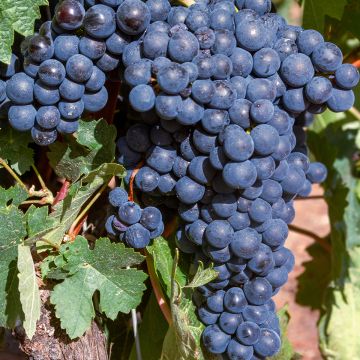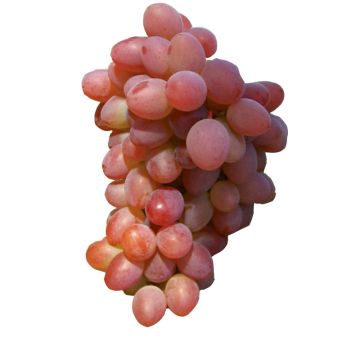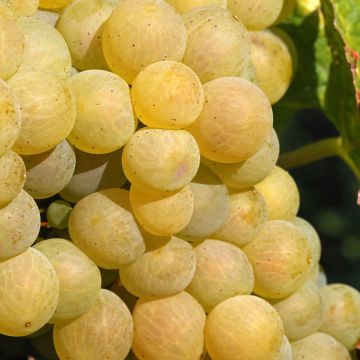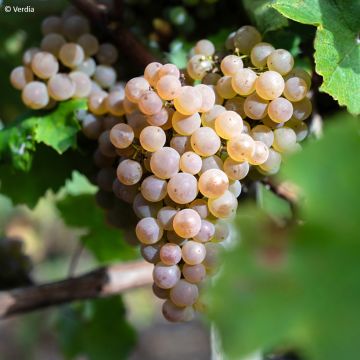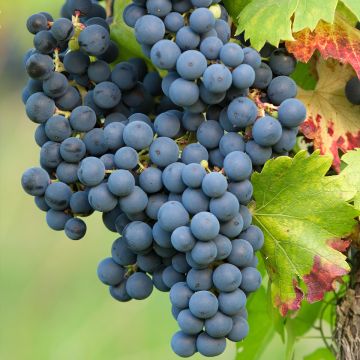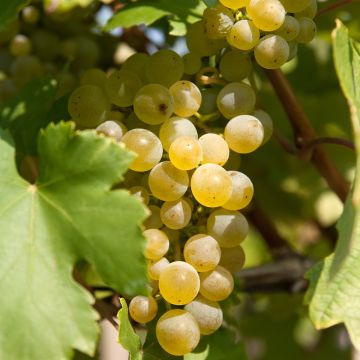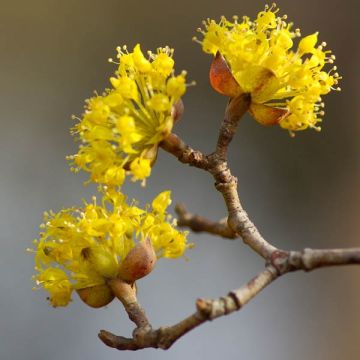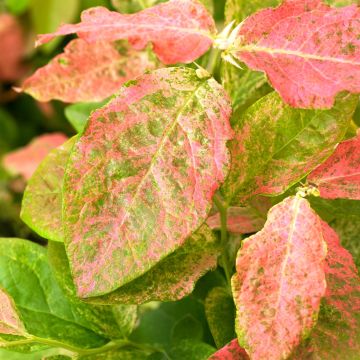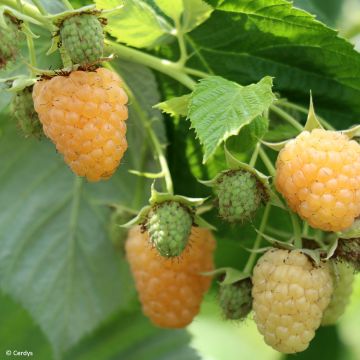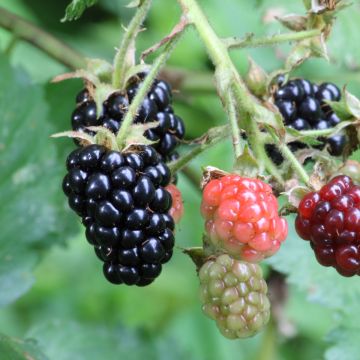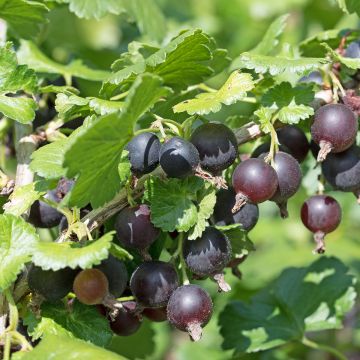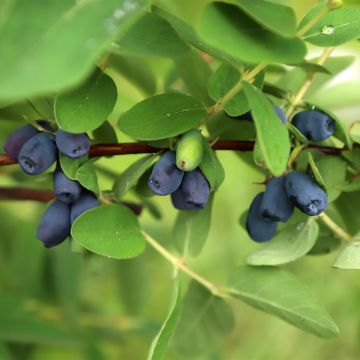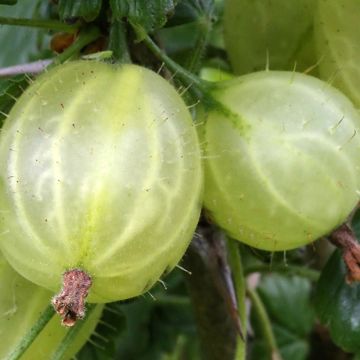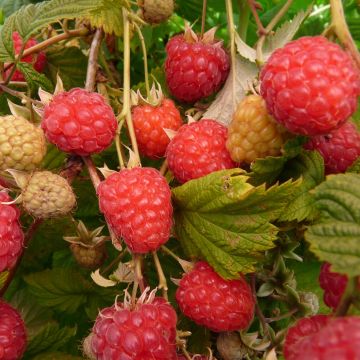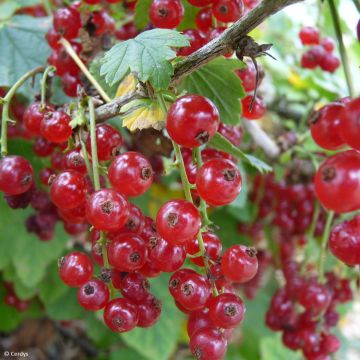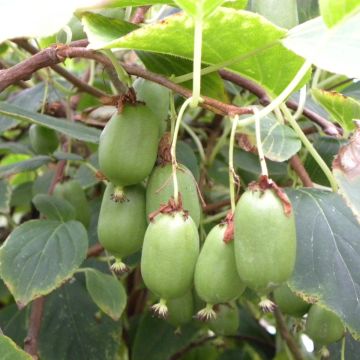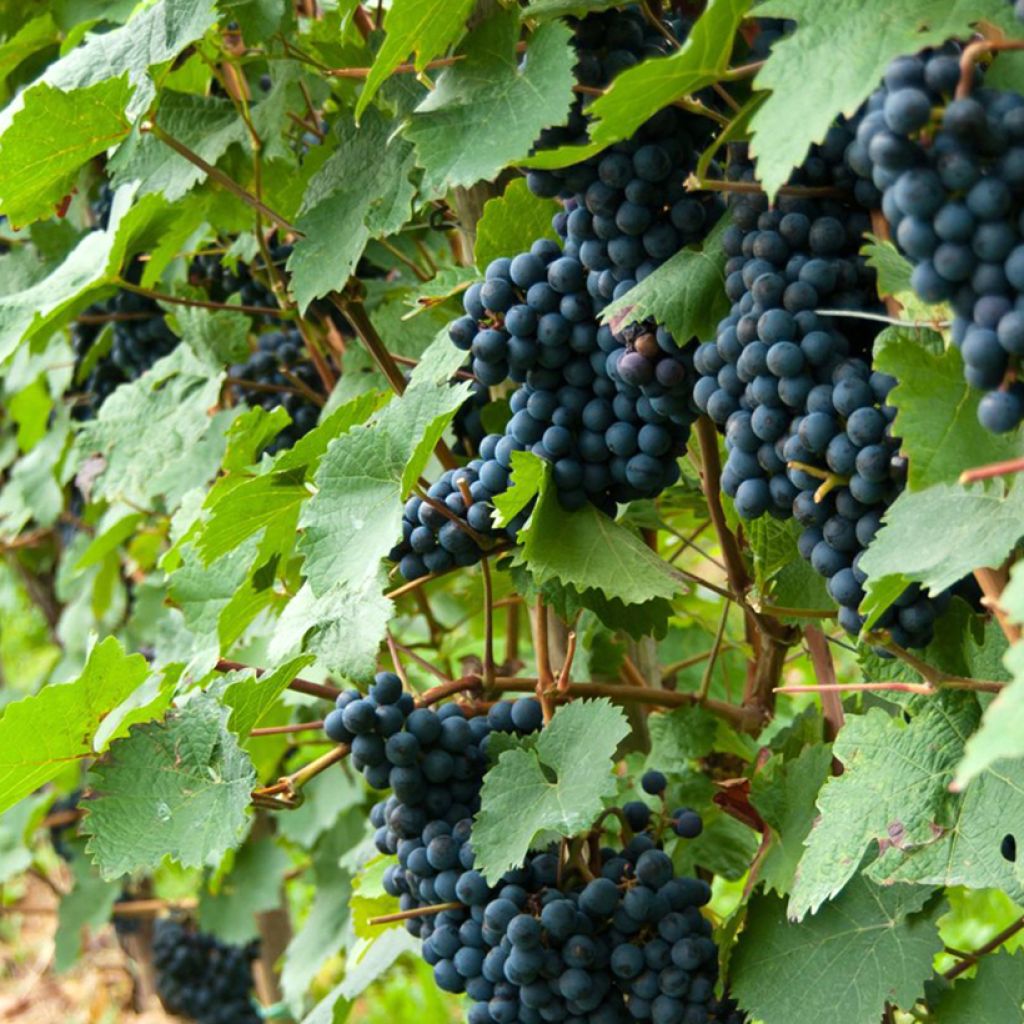

Vitis vinifera Solara - Grape vine
Vitis vinifera Solara - Grape vine
Vitis (x) vinifera Solara
Grapevine, Common Grape Vine, European Grape, Wine Grape
This item cannot be shipped to the selected country
Delivery charge from €5.90
More information
Schedule delivery date,
and select date in basket
This plant carries a 6 months recovery warranty
More information
We guarantee the quality of our plants for a full growing cycle, and will replace at our expense any plant that fails to recover under normal climatic and planting conditions.
From €5.90 for pickup delivery and €6.90 for home delivery
Express home delivery from €8.90.
Description
The 'Solara' vine is both a table variety and a wine variety. It produces compact clusters of fairly large oval, bark blue grapes. Their pulp is sweet with a slight acidity. They can be consumed fresh, as juice, as jelly, or transformed into wine. The harvest takes place from the end of August to mid-September depending on the region. This vigorous and cold-resistant variety is also resistant to diseases such as powdery mildew and downy mildew. It is perfect for covering a pergola.
From the Vitaceae family, Vitis vinifera grew in the wild over 5000 years ago. Many hybrids have emerged over the centuries, improving the flavour and disease resistance of grape varieties. The 'Solara' vine was obtained in Germany. It was selected for its cold resistance (although it dislikes late April frosts due to its early bud burst period) and its resistance to fungal diseases such as powdery mildew and downy mildew.
The vigorous 'Solara' vine is a climbing plant that can reach up to 6 m in height; its final shape will depend on the pruning practised. The vine attaches itself to its support thanks to its tendrils and likes very sunny situations.
This vine produces compact clusters of medium-sized, oval grapes with dark blue skin and practically seedless. Their pulp is very sweet and aromatic with a slight acidity. They can be consumed as table grapes, but also as juice or jelly. It is also a grape variety that can be vinified, although it is not very present in vineyards today. Depending on the region, the clusters are harvested between late August and mid-September. Its nectar-rich flowering occurs in May-June. The pale yellow flowers, although discreet, emit a subtle fragrance. Its large trilobed leaves are green in summer and transform in autumn to take on shades ranging from coppery yellow to bright red.
This 'Solara' vine, resistant to fungal diseases, avoids the need for a range of treatments and is suitable for organic gardens and permaculture. Why not plant a white grape variety like Phoenix, with a muscat aroma, alongside it. Consider the pomegranate, which will bring a tangy touch to your grape juice, with the Provence Pomegranate tree.
Report an error about the product description
Plant habit
Fruit
Flowering
Foliage
Botanical data
Vitis
(x) vinifera
Solara
Vitaceae
Grapevine, Common Grape Vine, European Grape, Wine Grape
Cultivar or hybrid
Other Grapevines
Planting and care
Plant the 'Solara' vine in autumn, in a deep, well-drained soil, even stony, arid, poor and chalky, in full sun and sheltered from strong winds. Incorporate 3 or 4 handfuls of fruit tree fertiliser and 2 kg of well-decomposed manure into the soil for each plant. The roots should not be in contact with the manure. After planting, prune above 2 large buds to encourage the growth of two branches. Keep the most vigorous one and tie it to a stake. This will be followed by the training pruning known as the "vertical cordon".
There is no need for regular fertiliser application. Simply enrich the soil with potash, crushed horn or iron chelate, every 2 to 3 years.
Planting period
Intended location
Care
This item has not been reviewed yet - be the first to leave a review about it.
Berries
Haven't found what you were looking for?
Hardiness is the lowest winter temperature a plant can endure without suffering serious damage or even dying. However, hardiness is affected by location (a sheltered area, such as a patio), protection (winter cover) and soil type (hardiness is improved by well-drained soil).

Photo Sharing Terms & Conditions
In order to encourage gardeners to interact and share their experiences, Promesse de fleurs offers various media enabling content to be uploaded onto its Site - in particular via the ‘Photo sharing’ module.
The User agrees to refrain from:
- Posting any content that is illegal, prejudicial, insulting, racist, inciteful to hatred, revisionist, contrary to public decency, that infringes on privacy or on the privacy rights of third parties, in particular the publicity rights of persons and goods, intellectual property rights, or the right to privacy.
- Submitting content on behalf of a third party;
- Impersonate the identity of a third party and/or publish any personal information about a third party;
In general, the User undertakes to refrain from any unethical behaviour.
All Content (in particular text, comments, files, images, photos, videos, creative works, etc.), which may be subject to property or intellectual property rights, image or other private rights, shall remain the property of the User, subject to the limited rights granted by the terms of the licence granted by Promesse de fleurs as stated below. Users are at liberty to publish or not to publish such Content on the Site, notably via the ‘Photo Sharing’ facility, and accept that this Content shall be made public and freely accessible, notably on the Internet.
Users further acknowledge, undertake to have ,and guarantee that they hold all necessary rights and permissions to publish such material on the Site, in particular with regard to the legislation in force pertaining to any privacy, property, intellectual property, image, or contractual rights, or rights of any other nature. By publishing such Content on the Site, Users acknowledge accepting full liability as publishers of the Content within the meaning of the law, and grant Promesse de fleurs, free of charge, an inclusive, worldwide licence for the said Content for the entire duration of its publication, including all reproduction, representation, up/downloading, displaying, performing, transmission, and storage rights.
Users also grant permission for their name to be linked to the Content and accept that this link may not always be made available.
By engaging in posting material, Users consent to their Content becoming automatically accessible on the Internet, in particular on other sites and/or blogs and/or web pages of the Promesse de fleurs site, including in particular social pages and the Promesse de fleurs catalogue.
Users may secure the removal of entrusted content free of charge by issuing a simple request via our contact form.
The flowering period indicated on our website applies to countries and regions located in USDA zone 8 (France, the United Kingdom, Ireland, the Netherlands, etc.)
It will vary according to where you live:
- In zones 9 to 10 (Italy, Spain, Greece, etc.), flowering will occur about 2 to 4 weeks earlier.
- In zones 6 to 7 (Germany, Poland, Slovenia, and lower mountainous regions), flowering will be delayed by 2 to 3 weeks.
- In zone 5 (Central Europe, Scandinavia), blooming will be delayed by 3 to 5 weeks.
In temperate climates, pruning of spring-flowering shrubs (forsythia, spireas, etc.) should be done just after flowering.
Pruning of summer-flowering shrubs (Indian Lilac, Perovskia, etc.) can be done in winter or spring.
In cold regions as well as with frost-sensitive plants, avoid pruning too early when severe frosts may still occur.
The planting period indicated on our website applies to countries and regions located in USDA zone 8 (France, United Kingdom, Ireland, Netherlands).
It will vary according to where you live:
- In Mediterranean zones (Marseille, Madrid, Milan, etc.), autumn and winter are the best planting periods.
- In continental zones (Strasbourg, Munich, Vienna, etc.), delay planting by 2 to 3 weeks in spring and bring it forward by 2 to 4 weeks in autumn.
- In mountainous regions (the Alps, Pyrenees, Carpathians, etc.), it is best to plant in late spring (May-June) or late summer (August-September).
The harvesting period indicated on our website applies to countries and regions in USDA zone 8 (France, England, Ireland, the Netherlands).
In colder areas (Scandinavia, Poland, Austria...) fruit and vegetable harvests are likely to be delayed by 3-4 weeks.
In warmer areas (Italy, Spain, Greece, etc.), harvesting will probably take place earlier, depending on weather conditions.
The sowing periods indicated on our website apply to countries and regions within USDA Zone 8 (France, UK, Ireland, Netherlands).
In colder areas (Scandinavia, Poland, Austria...), delay any outdoor sowing by 3-4 weeks, or sow under glass.
In warmer climes (Italy, Spain, Greece, etc.), bring outdoor sowing forward by a few weeks.

































